CenarioVR Case Studies
Maximise performance while minimising risk using the easiest VR authoring tool imaginable - CenarioVR
Winner of the LearnX Live Awards Australia, CenarioVR is changing the game in eLearning.
One of the greatest challenges in L&D, is that there are so many training needs that are simply too time-consuming or expensive – and at the extreme end of the spectrum – outright dangerous or impossible.
Virtual Reality is changing all of this, by creating simulated real-world, immersive experiences. Charles Jennings may have stated that humans are ‘Forgetting Machines’, but studies have shown that learning in the virtual environment leads to better recall by boosting engagement – and retention by 80%.
Evolve your digital learning strategy into a more immersive experience for your learners. CenarioVR makes it easy and cost-effective to create, share and track any scenario – as part of a course or the entire course!
“CenarioVR is one of the easiest tools to create VR training applications” – Kevin Brake eLearning Instructional Design Expert
CenarioVR Case Studies
Employee Onboarding & Induction

Vanderbilt University School Of Nursing
Client: Platinum winner of the LearnX Live Awards Australia for “Best Use of Virtual Worlds”.
The mission of Vanderbilt University School of Nursing is to lead in education, evidence-based practice, scholarship, and research in order to provide optimal health care to diverse communities through innovation, inclusion, and compassion.
Challenge: The Vanderbilt University School of Nursing has limited opportunities to effectively train its growing Nursing School enrolment to become ultrasound technology certified due to medical equipment costs and a strong focus on patient safety.
To ensure that high-cost scanners remain with the patients who need them, the client opted for replacing traditional training with VR experiences.
Strategy & Solution: CenarioVR was used to build an authoring course that replicated the clinical setting virtually.
Students could view virtual content at their leisure, orient themselves on the anatomical features being scanned, view the ultrasound output in full field of view in real-time coinciding with what the clinician is doing with the patient – then replay activities until they felt confident in their understanding of the task.
This significantly reduced the time of hands-on experience needed to develop proficiency and enabled instructors to train more students more quickly.
In addition, each student reported they had a more efficient training experience with the ultrasound probes.
Ultimately, Vanderbilt University avoided the need to purchase five additional ultrasound machines valued at $425,000 USD ($85,000+ USD each) to support its growing enrolment.
Watch the case study.
Watch the video.
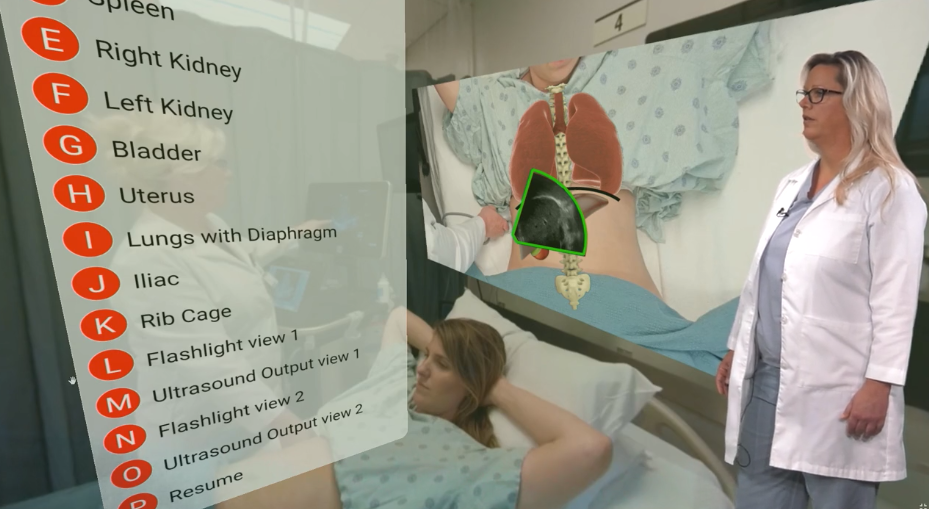
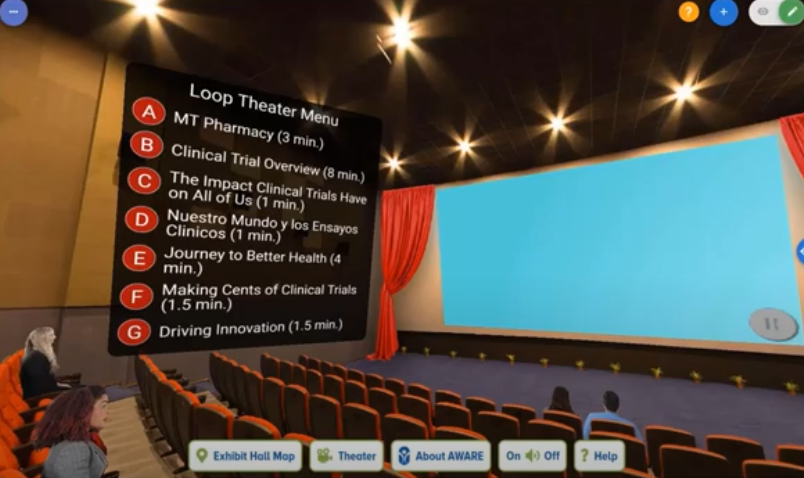

The Center For Information & Study On Clinical Research Participation
Client: CISCRP is a non-profit organisation dedicated to educating the public, patients, medical/research communities, the media, and policy makers about clinical research and the role each party plays in the process.
Challenge: COVID-19 caused the cancellation of live conferences and events globally, therefore CISCRP decided to recreate its events digitally via a simulated interactive experience.
Strategy & Solution: The strategy was to create a full, immersive, 360° virtual reality health fair experience, built with CenarioVR, the leading virtual reality course authoring application.
Participants could visit over 30 virtual sponsor and exhibitor booths, learn about each exhibitor via posters, text, and short introductory videos, and visit the CISCRP theatre to view a series of short videos about clinical research trials.
The VR health fair program resulted in an engaging interactive experience, receiving outstanding feedback from the over 30 exhibitors and 350 attendees alike.
Watch the case study.

PEI
Client: PEI is a US based power plant located in Philadelphia.
Challenge: The objectives were to teach the hazards employees may face in the workplace and to teach them both what to do if they see the hazards and how to carry out tasks correctly to avoid creating a hazard themselves.
The challenges inherent with a power plant, is that it is a very secure, lockdown environment with small spaces – therefore it is difficult to use video.
An additional challenge was shooting and producing on two different continents.
The solution was to use a headset camera, transmitting the footage from the US to the production company in the UK.
Strategy & Solution: The participants were immersed in a scene and clicked on anything they saw as a hazard.
Once the hazard had been clicked, a question appeared prompting the user to answer what to do. Once clicked, a solution video popped up, demonstrating the correct method before moving on to the next scene.
The course worked extremely well on multiple devices, in different environments, was created quickly, and successfully met its training objectives.
Watch the case study (starts at timecode 21:44)
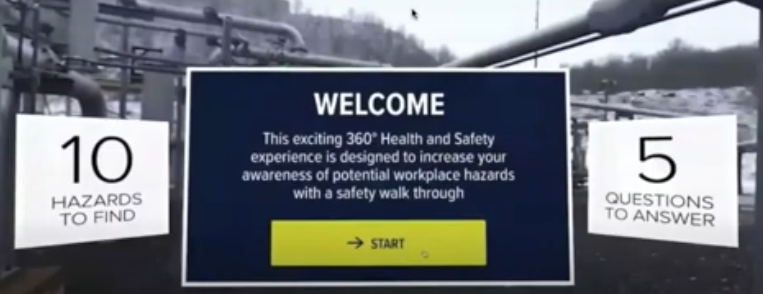
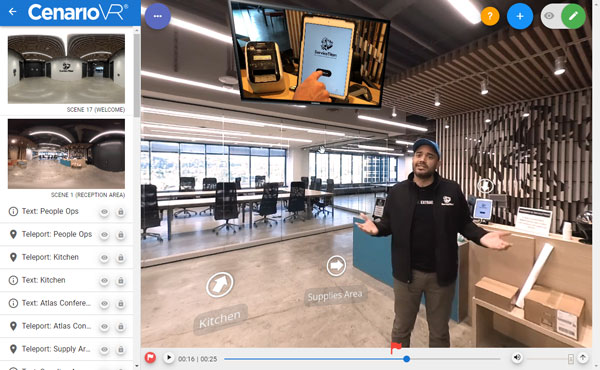

Service Titan Corporation
Client: Service Titan is a global software company in the commercial contracting industry.
Challenge: Ensure employees are properly onboarded and familiar with processes and safety procedures.
Strategy & Solution: CenarioVR was used successfully to onboard staff at their headquarters. New employees were introduced to the facility and to key staff through VR to encourage them to discover all that is offered at the facility, including processes, workplace safety features and more.
Watch the case study.
Emergency Services & High Risk
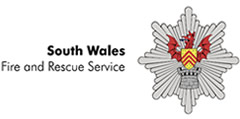
South Wales Fire & Rescue Service
Client: The South Wales Fire & Rescue Service covers the 10 different principle areas of response, and includes 1,000 employees.
Challenge: Train firefighters on extricating a casualty from a major road accident, simulating a real life-or-death scenario where decisions need to be made in a high-stress environment.
Strategy & Solution: VR was used to help learners experience an emergency rescue operation, learning more about, and experiencing the rescue process via expert testimonials and on-screen augments.
Knowledge was reinforced with quick quizzes and the user’s progress was recorded, scored and displayed to give a sense of progression.
The program was shot in one day and shows the viability of immersive training for an intensely hands-on practical training exercise while introducing the participants to the skillsets involved.
Great 360º VR training relies on realism and usability. The user needed to be able to navigate the 360º scene without having to think about it. They should be focussed on the experience, not how to get back to the menu.
Good user experience design was the key. Much of the learning lives in the pop-ups with excellent 2D film to support the 360º – including the in-car victim Go-Pro footage and live crew action.
The delivery was designed first and foremost for mobile – iPhone and Android, as well as desktop.
Immerse yourself in the experience here.
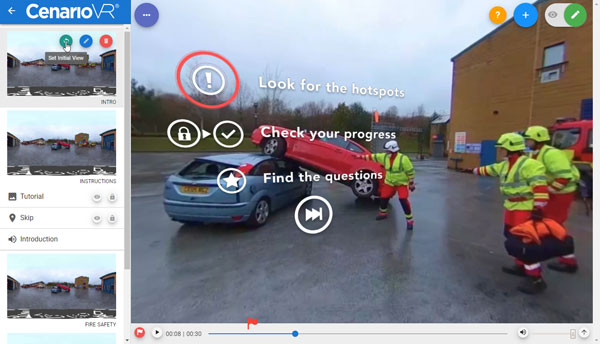
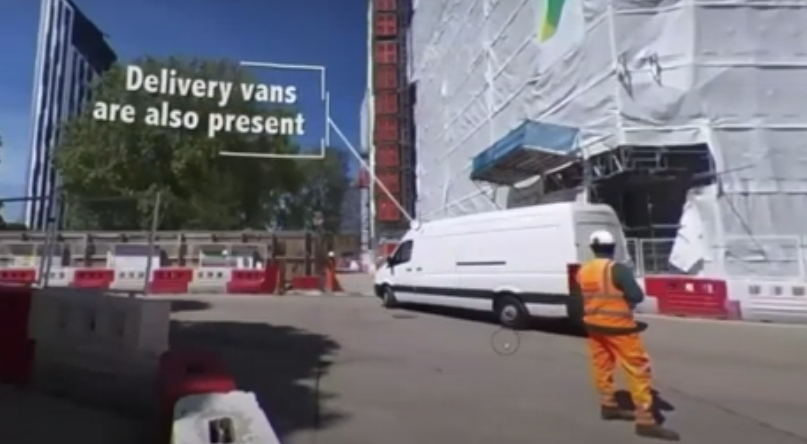
Manufacturing & Procedural

Morrisroe
Client: AJ Morrisroe are involved in complex building projects that rely on everyone working on specific technical tasks – a situation that creates a series of management challenges.
Challenge: Morrisroe are involved in complex building projects that rely on everyone working on specific technical tasks – a situation that creates a series of management challenges.
Skilled tradespeople are keen to get on with their work once onsite, and Morrisroe is responsible for both quality of their work and workplace health and safety.
They needed a means to consistently show their staff and contractors the standards and expectations of how they would approach each task onsite.
Strategy & Solution: The solution involved creating an app containing a suite of linear and interactive films, designed to be mobile, realistic and to test the viewer.
This allowed access to these anywhere, with no room for misinterpretation.
The information from their Standards documents and existing PowerPoint presentations formed the basis of the 17 short technical films, produced in conjunction with their subject matter experts.
These were filmed on working sites using Morrisroe employees and contractors for added authenticity.
Interactivity and gameplay, combined with techniques such as hotspots, sound, quizzes and the immersive effect of 360º footage were used to engage learners. Leaderboards, badges, branding scenarios and more – encouraged people to keep learning and give them a sense of achievement as they do so.
At a typical onsite induction, relevant short videos are shown to the contractors who are tested on an inexpensive tablet. Within just a few frames they understand where they are and what is required.
Failure to pass the test denies them site access, but a pass is recorded digitally and the individual is free to work in their specialism on all Morrisroe sites. All the results are stored in a digital record, creating an invaluable resource for compliance and, in the process, saving induction time and money. A thoroughly modern digital approach that has been very well received.
Over a hundred contractors have been successfully inducted, with their proficiency tested on generic and specialist topics.
Watch the case study. (starts at timecode 15:52)
Immerse yourself in the experience here.
Sales & Customer Experience

Fendi
Client: Global luxury fashion house Fendi, required an immersive learning tool to show staff how to help opportunistic theft in store.
Challenge: To fully immerse the user into a shop floor retail environment. By using video the client would capture real world concepts such as staff not paying attention, messy areas, not emptying the changing room before the next customer, open doors and unattended areas of the store.
Content needed to be created for Fendi Europe and the Middle East in 16 different languages.
Strategy & Solution: Videos mainly consisted of interactive, scoreable 2D exercises, and short instructional films.
The CenarioVR film was shot in one evening in the flagship UK store. It was the only piece of 360º footage deployed with the rest of the course.
VR acts much like ‘theatre in the round’, and was the ideal solution for this ‘tricky’ subject matter.
The key factor in keeping the user immersed, was in the staging these scenarios to make them look as real as possible – with store staff making critical mistakes. The task was to spot the mistakes before the opportunistic thief can take advantage.
As the action and the scoring on the screen and timer – to create urgency and a sense of the real situation.
It was successfully embedded into an eLearning course with short pieces of linear video.
Built in Lectora, the web interface looks like an app and it was supplied on the Fendi tablets. The course was designed to play in 4G in a retail environment.
The course successfully deployed VR in a blended micro-learning environment.
Watch the case study (starts at timecode 11:32).
Immerse yourself in the experience here.
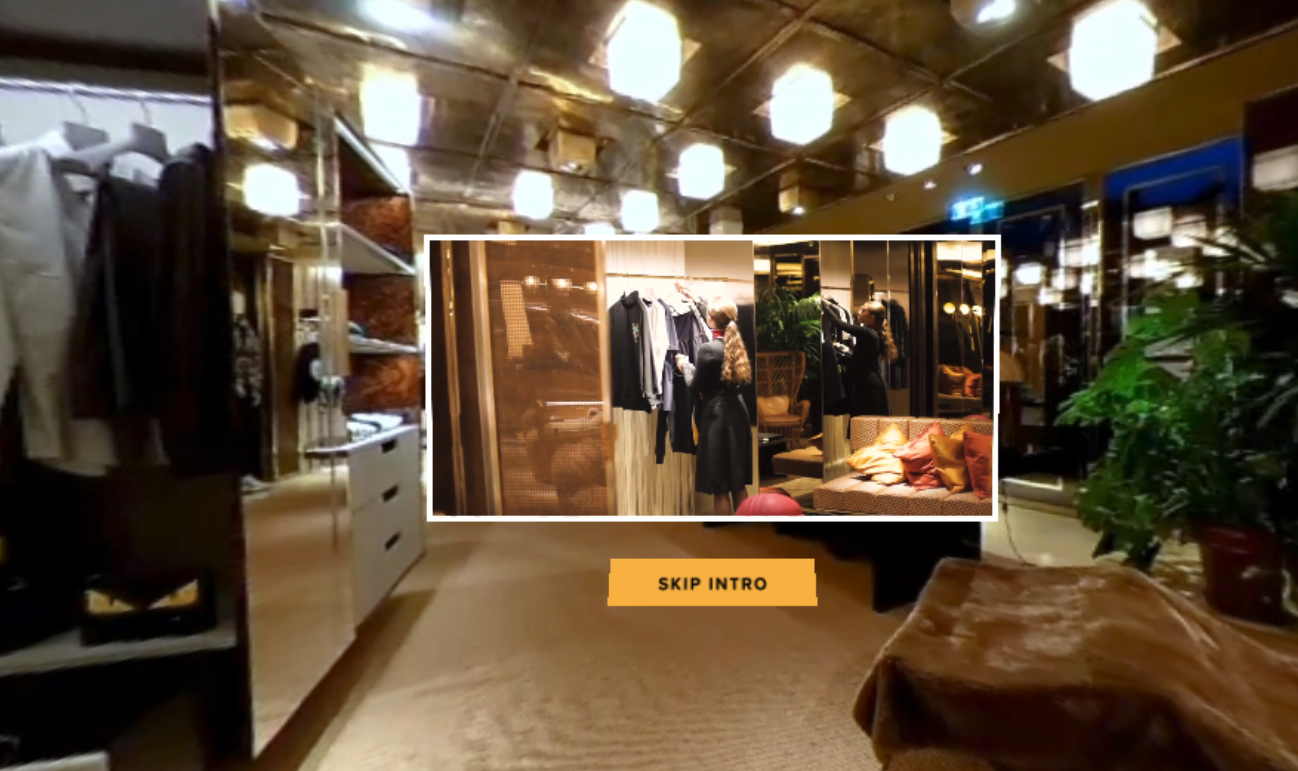
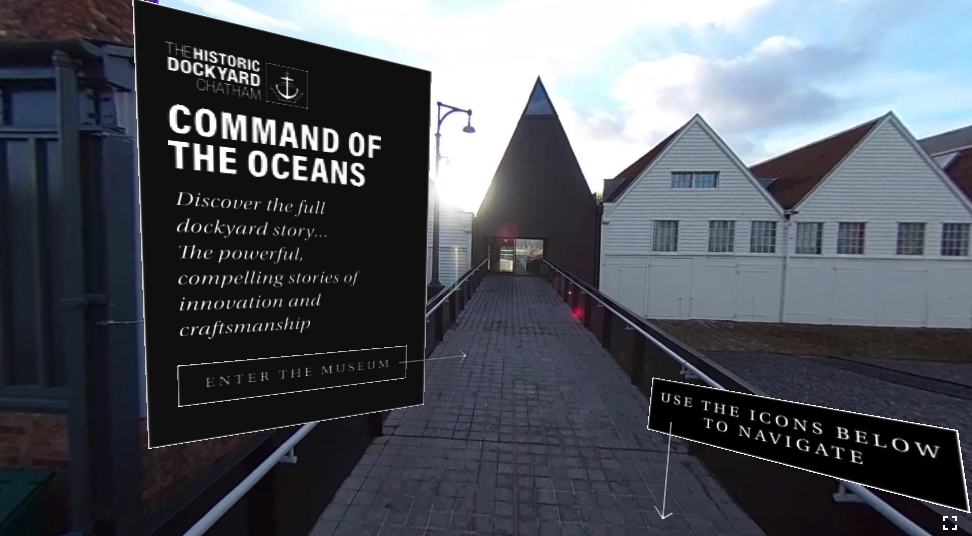

Chatham Historic Dockyard
Client: This historic site in the UK, wanted to create a walkthrough of the popular site for the purpose of attracting tourists.
Challenge: This was a particularly critical challenge in the current environment of 2020 and travel restrictions due to COVID-19.
Strategy & Solution: The use of teleporting by moving through locations whilst clicking on points was achieved through an interactive 360VR module.
It enabled ‘visitors’ to explore the exhibition rooms, answer questions, and watch interviews with the architect, museum director and structural engineer.
It was also important to ensure that the client’s network could support the file size.
The effect was a very successful immersive, virtual guided tour – as a web resource from any device from mobile phone to a headset. And it also functions in a poor wi-fi environment, as it is downloaded from the CenaroVR app and it’s stored on the device itself.
This experience comes alive as the participants get sense of having their very own expert tour guide – an excellent format for onboarding and induction as well.
Watch the case study (starts at timecode 11:32).
Immerse yourself in the experience here.